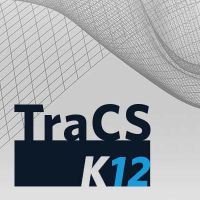Pain is a tricky thing to measure. Unlike metrics such as blood pressure, heart rate or even cancer presence—all of which can be assessed with a test—diagnosing pain relies almost entirely on the use of descriptive language. But while this quasi-literary method works well enough with most patients, it's nearly useless for patients who can't speak at all.
Morika Williams is demystifying pain
Williams, a former KL2/K12 scholar with NC TraCS, began her career as a veterinarian—but is now studying pain in both animals and humans.
Morika Williams, DVM, PhD, DACLAM
Pain is a tricky thing to measure. Unlike metrics such as blood pressure, heart rate or even cancer presence—all of which can be assessed with a test—diagnosing pain relies almost entirely on the use of descriptive language. A patient may tell a clinician, for example, that they're feeling a "stabbing" or "burning" pain in their stomach, or behind their ears, which might be "diffuse" or "localized" or even "lingering."
But while this quasi-literary method works well enough with most patients, it's nearly useless for patients who can't speak at all. Morika Williams, an assistant professor at the UNC School of Medicine and a former KL2/K12 scholar with the North Carolina Clinical and Translational Sciences (NC TraCS) Institute, has been thinking about this problem for a long time.
Williams began her career as a veterinarian, where none of her patients (except for maybe some of the parrots) could speak. But after working on a clinical trial of dogs with osteoarthritis, she began to think about how complicated it is to study pain in subjects who can't use language. And then she realized there was another group of patients, besides animals, who couldn't describe their pain either: babies.
This language barrier isn't just an impediment to diagnosing and treating pain in infants. It's also a roadblock for research, with potentially serious implications. Some studies have suggested that pain experienced early on in life might be associated with health issues later in life; but without a way to objectively detect or measure pain in infants, these links have been difficult to study in detail.
So now, Williams is trying to understand the science of early life pain better. In addition to studying the fundamental biology of how pain in newborn babies might affect their long-term health, she's also developing a computer program that could detect when an infant is in pain and measure how much pain that baby is feeling. This tool could unlock countless opportunities for new pain research in newborns—and provide a lifeline to a uniquely vulnerable group of patients.
"I'm helping a population that has no voice," Williams says.
Williams had no intention of working with people when she began her career. All her life, she had wanted to be a veterinarian—and when she went to school, first for undergraduate degrees at North Carolina Agricultural and Technical State University and later through a doctorate in veterinary medicine at North Carolina State University, that was still the plan.
But then that canine osteoarthritis study changed the course of her career. After "falling in love with pain," Williams eventually decided to take on a fourth degree, this time a PhD program in comparative biomedical sciences at NC State. She wrote her dissertation on the long-term effects of early-life pain, studying animals to understand both human and animal babies through a translational research lens.
Diagnosing pain in babies and animals relies a lot on context clues. For example, when a dog is in pain, it might still run up and jump on you because it's excited to see you, Williams says. But later the dog may start limping, which can tell a vet that something is wrong, she notes. Vets can also use second-hand information from a pet's owners, like "They're not eating as much as normal" or "They're not as playful as they usually are," to help diagnose an animal.
The same is true for babies. If a crying baby comes to see a doctor, those tears could have many different meanings. Maybe the child is in pain—or maybe they're just hungry, or tired, or displeased with the shoes they're wearing. So, pediatricians will often run through a list of second-hand criteria with a child's caregiver to gather more information: Are they fussy? Are they not eating? Are they sleeping? With this information, a doctor can help narrow down the potential issues and determine a course of treatment.
But while such improvisation can be useful to help patients one-on-one, it's not always good enough for quantitative research. Medical and clinical studies often need hard data to analyze and evaluate issues statistically, and descriptors like "seems to be fussier" or "cries often" are difficult to quantify. In addition, because these evaluations can be so subjective, different researchers may have different criteria and thresholds for evaluating pain. One person's score of "7" on pain scale of 1-10, for example, may be another person's "8," or another's "5."
When Williams first encountered these challenges, she said she discovered several gaps in our understanding of how to diagnose and treat pain in infants. "So, I wanted to be the gap-filler and close that gap of knowledge on the human side, and also the animal side," she says.
Research into pain among newborn babies is also proving to be vital. Historically, many experts negated or downplayed how much pain infants can feel, believing that their nervous systems weren't developed enough for pain to register. And even still, many medical procedures are performed on newborns without pain-relieving medication, in part out of legitimate concerns about the potential side effects of painkillers and anesthetics. But an array of studies has now shown that not only can infants feel pain, but also that pain can be a key facet of early health.
In her dissertation, Williams cited research showing that going through multiple painful procedures as an infant was associated with slower growth in babies born pre-term, for example. These risks are especially concerning for pre-term babies, who routinely go through painful procedures during the first few weeks of their lives.
In addition, some researchers are concerned that going through repeated pain during infancy (a period when a person's development is extremely malleable) could be a risk factor for increased pain sensitivity and chronic pain later in life. But the science behind this potential connection is far from clear, so part of Williams' current work at UNC is to study how early-life pain might affect pain experienced throughout a person's life.
Mark Zylka, PhD
She's also working on a tool that could help make pain assessment in infants a little easier, using her veterinary medicine background as a jumping-off point. One of Williams' colleagues at UNC, neuroscientist Mark Zylka, has helped to develop a software called "PainFace," which can detect a pain grimace in a mouse's face and assess how much pain that mouse is in on a scale from 0 to 8. Williams is almost done developing this tool in rats and is now working on translating the software into newborn human babies—an application she's calling "BabyFace."
With this software, providers and researchers could one day have a more definitive measurement of pain in infants, instead of relying on vague descriptors or subjective assessments. And more hard data surrounding pain could improve research that today has limitations, such as clinical trials aimed at reducing pain during medical treatments given to pre-term babies.
Williams says a pain-detection program like this could one day help babies on an individual level, too. Theoretically, she suggests, caregivers could eventually have a mobile version of this pain-recognition software and use it to help them understand their child's pain.
Generally, more objective pain measurements could also help to reduce some biases in medicine. For example, Williams points out that Black Americans tend to be prescribed fewer pain medications. But if doctors relied more on a computerized assessment of pain rather than their own judgement influenced by unconscious biases, that could help close this health disparity.
And for Williams, being a champion for underrepresented groups in science is part of her role as a researcher and veterinarian. That includes connecting with patients, such as by encouraging people who may not have historically participated in medical research to sign up for clinical trials. She wants to help people know that they, too, can be a part of veterinary medicine and do unique and groundbreaking science.
"Being a Black woman, it just feels so good that I'm able to knock down some barriers," Williams says. "And hopefully expose and showcase to other minorities and women in science that you can do whatever you want to do as long as you put your mind to it."
Related
NC TraCS is the integrated hub of the NIH Clinical and Translational Science Awards (CTSA) Program at the University of North Carolina at Chapel Hill that combines the research strengths, resources, and opportunities of the UNC-Chapel Hill campus with partner institutions North Carolina State University in Raleigh and North Carolina Agricultural and Technical State University in Greensboro.

